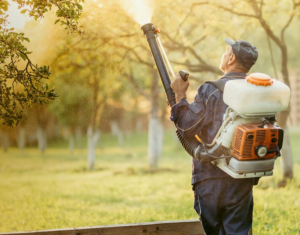Whether a baseball smashed through the glass or you’ve noticed an increase in energy bills, your windows are likely to be in need of some serious attention. Luckily, replacement windows are an excellent solution.

Before you start shopping around for new windows, consider your goals, wants, and needs. This will help narrow down your options and find the perfect window for your home. Connect with Replacement Windows Massachusetts for reliable help.
There are many different elements that go into creating a harmonious visual flow throughout your home, and windows play an important role. With their sleek lines and modern styling, replacement windows elevate the aesthetics of your home, increasing its curb appeal and making it a more appealing place to call home. The wide range of options available also mean that you can find the perfect fit to suit your architectural style and personal tastes.
Unlike older, drafty windows that leave a home looking worn and weathered, newer replacement windows are energy efficient and designed to be low maintenance, which contributes to the beauty of your home. In addition, replacement windows are made from durable materials that resist fading, warping and other signs of wear and tear. They also provide a beautiful view of the outdoors, which makes any home feel more open and inviting.
Modern replacement windows are designed to reduce noise transmission and create a quieter, more peaceful living space. Features like insulated frames and double or triple glazing help minimize outside noise, which can be especially helpful for families who live near busy streets or airports.
As with other types of home improvement projects, there are two main options when it comes to replacing your windows: full frame and pocket replacement windows. Full frame replacement windows replace the entire window frame and sash, while pocket replacement windows can be installed inside your existing window frame. Full frame replacement windows are ideal for remodeling an older, drafty home while keeping the exterior cladding or trim in place. Pocket replacement windows are a good option for homes that need to be updated but where the original exterior cladding or trim is in good condition.
In addition to reducing your home’s energy costs and improving its visual appeal, replacing your windows can boost your property value and help you make the most of your home’s natural light. In addition, replacement windows are available with a wide range of aesthetic features such as grilles and muntins to enhance the look of your home. The design, size, and color of your home’s windows can influence the way people perceive it, so taking care to select the right replacement windows for your property is essential.
Increased Home Value
The right windows elevate the look of a home while providing important functionality and energy efficiency. When choosing replacement windows, homeowners must consider their budget, timeframe, design preferences, and energy efficiency goals. It is also important to understand the difference between replacement and new construction windows. New construction windows are ideal for brand-new homes while replacement windows are a great choice for remodeling projects.
There are two different installation methods for replacement windows: full frame window replacement and pocket replacement. A full frame installation requires removing the existing window sash and frame. This allows for a more comprehensive upgrade that addresses any structural concerns and underlying damage that may be present. Pocket replacement windows install into the opening of an existing window frame, and are a more cost-effective option.
Both styles offer a wide range of frame and glass options to meet your style, aesthetic, and performance needs. Newer replacement windows are designed with superior insulation to help you reduce your energy bills and maintain a comfortable indoor temperature throughout the year. You’ll also be able to cut down on external noise, making your home more tranquil and relaxing.
As an added bonus, replacing old windows can increase your home’s value. According to Remodeling magazine, a vinyl window-replacement project is one of the top eight home improvement projects in terms of return on investment. In fact, 69 percent of the cost of a vinyl replacement is recouped in home sale prices.
Better Energy Efficiency
One of the main reasons many homeowners invest in new windows is to cut energy costs. After all, drafty windows allow a significant amount of cold air to escape during the winter and hot air to penetrate during summer, putting an unnecessary strain on your HVAC system. New replacement windows can dramatically lower your energy bill by reducing heat transfer and improving insulation.
The most energy-efficient windows feature multiple panes of glass, low-e coatings and a layer of inert gas between the frames. While these features are great for lowering energy consumption, the most important factor for achieving energy cost savings is proper installation. Incorrect installation can reduce the effectiveness of even the most efficient window, no matter how many panes, low-e coatings or gas fills it has.
This is why it’s important to choose a professional installer for your replacement windows. They’ll be able to accurately measure the width, height and depth of your existing window frame opening for a precise fit. They can also remove any blinds or drapes from the window area, and clean it thoroughly to prepare it for the installation process.
In addition, they’ll be able to recommend the best framing materials for your replacement windows, taking into consideration factors like budget and style preferences. For example, a homeowner may want wood-look interior frames but prefer the durability of vinyl or aluminum for the exterior. There are also many different window styles available, from classic double-hung to sleek casement.
Ultimately, choosing the right replacement windows for your home is an investment that will pay off in both energy savings and increased home value. Understanding the science behind these windows, the different types and installation processes, costs and savings, and maintenance tips is essential for ensuring you make the best decision for your home.
With 40% of the average household energy budget going to heating and cooling, the last thing you want is that money to escape through your old windows. By replacing your outdated windows with ENERGY STAR certified models, you can save significantly on energy bills. The specific amount you save will vary based on the type of windows you choose and your location, but the EPA estimates that installing new, energy-efficient double-pane windows can save homeowners up to $366 per year in heating and cooling costs.
Reduced Noise
If you live in a busy area with lots of traffic, sirens, lawnmowers, and construction, then outside noise can be quite bothersome. New windows are able to reduce this noise and make your home quieter and more peaceful. You can relax, focus, and sleep easier without all the stress-inducing outside noise.
This is made possible by the sound-canceling features found in energy efficient replacement windows. The frames and glazing of these windows act as roadblocks in the way of traveling sound waves. Double- or triple-pane windows have two or three glass panes with a layer of plastic interlayer between them. This layer absorbs the sound vibrations before they reach the inside of your home.
The material of the window frame can also have a big impact on its sound-reducing abilities. Wood, for example, is much better at insulating than aluminum. This is because it traps air in between its cellular structure, which helps reduce the transfer of heat and sound. Window manufacturers often use a special treatment on the wood that they use in their products to help protect against swelling and increase its lifespan.
You can further improve the sound-reducing capabilities of your replacement windows by having them installed from the inside. This involves removing the interior trim and casing around the existing window and then installing the new windows from the inside of your house. This method is usually preferred because it minimizes the amount of work needed to install the windows and allows you to keep your exterior trim and casing intact.
It’s important to remember that even the best replacement windows won’t silence outside noise entirely. However, they will likely significantly reduce the level of noise you hear in your home. This will allow you to relax, focus, and sleep much easier without the anxiety-inducing sounds of traffic, lawnmowers, and barking dogs blasting in your ear. It will also reduce the amount of noise from neighbors or other nearby buildings that can seep into your home through the windows. This is why it’s essential to have your windows properly installed.
